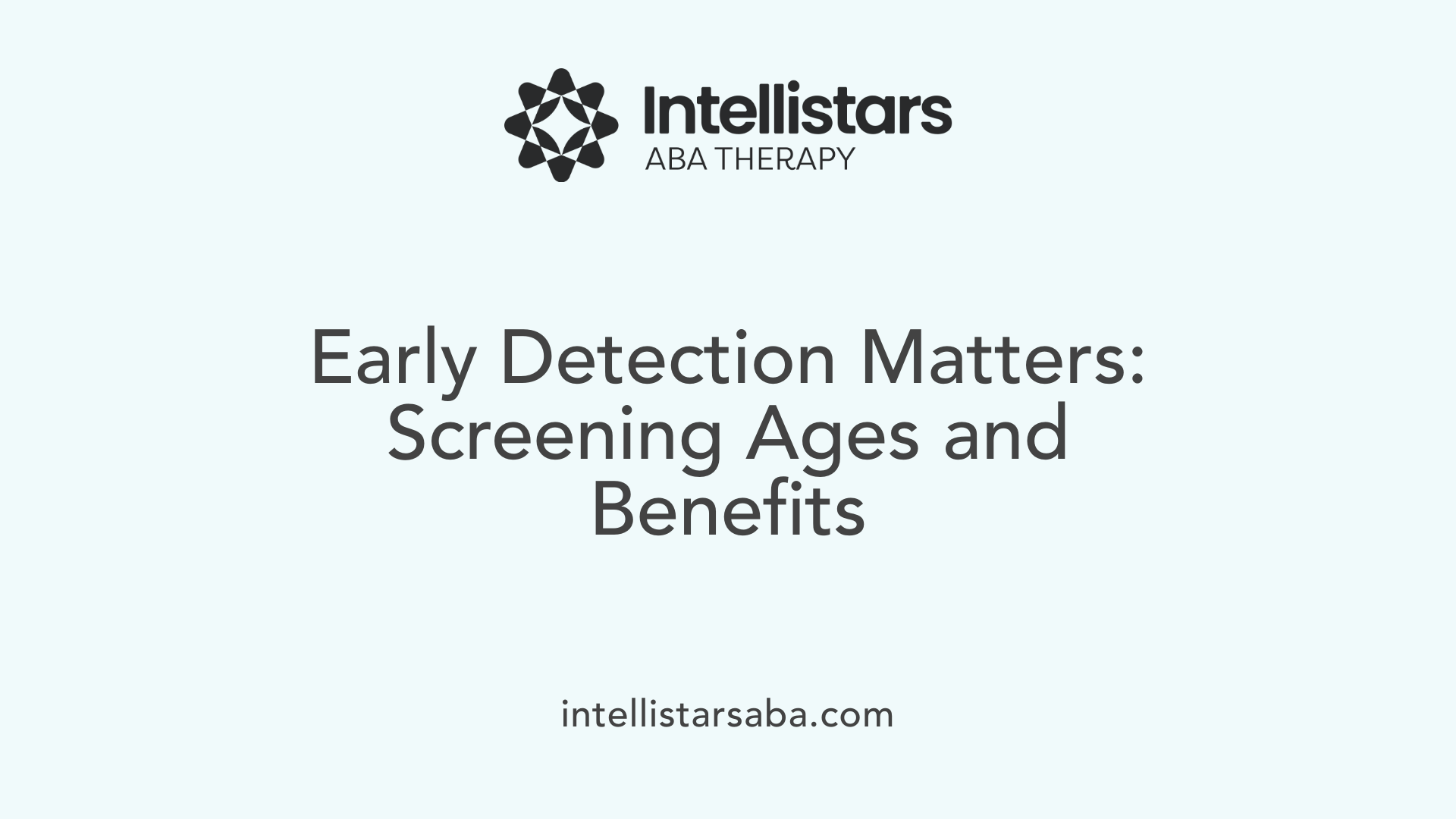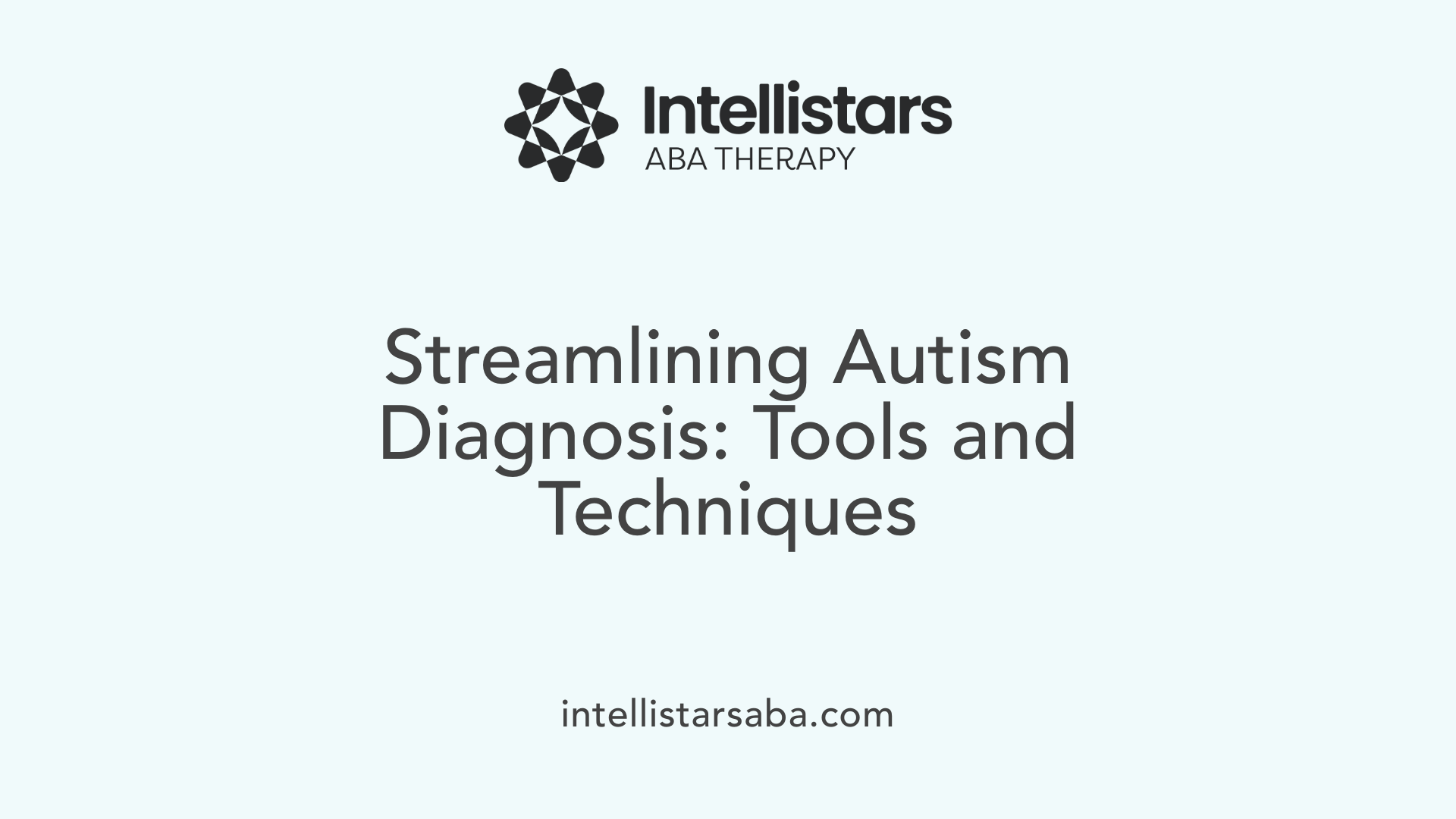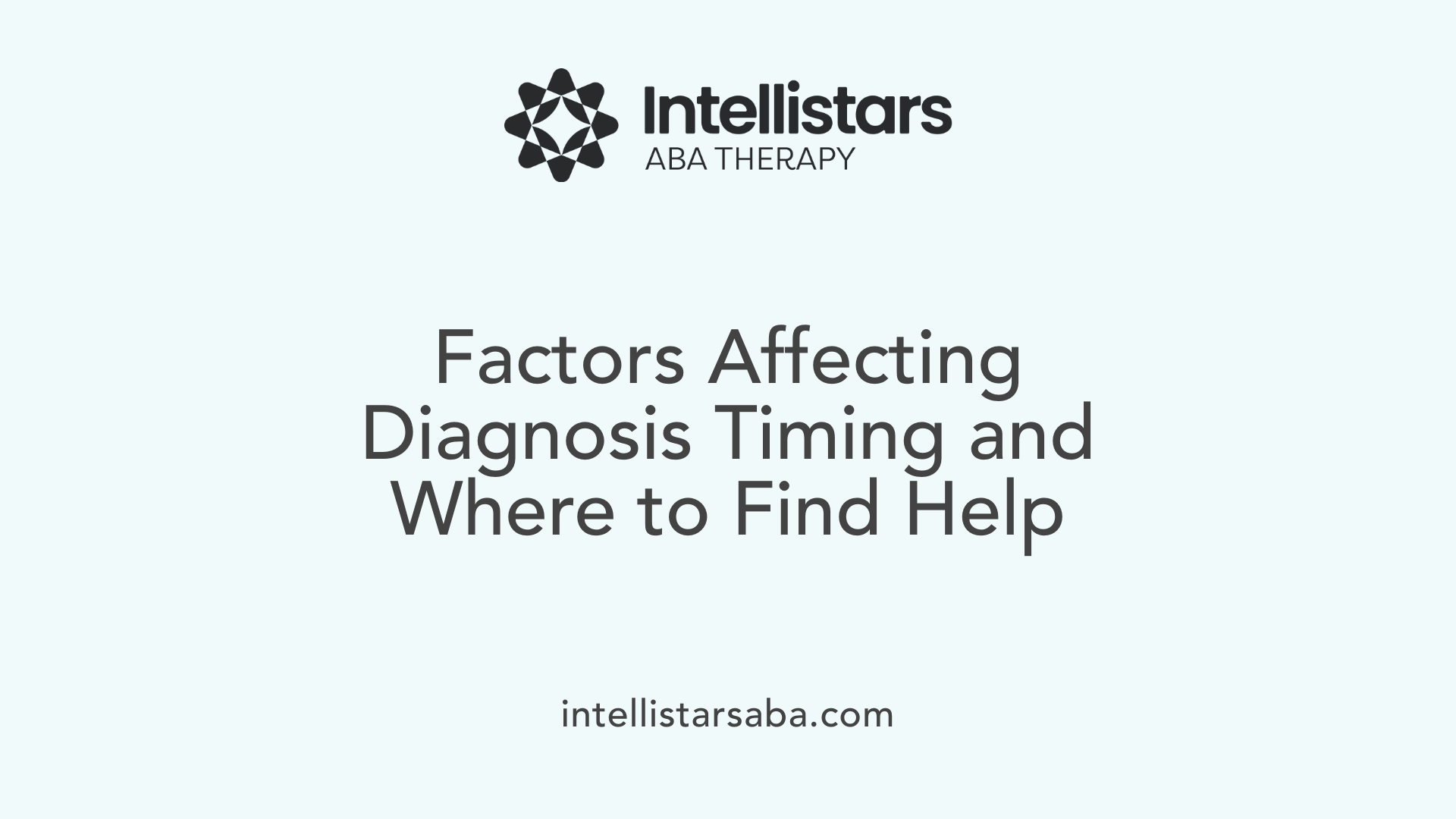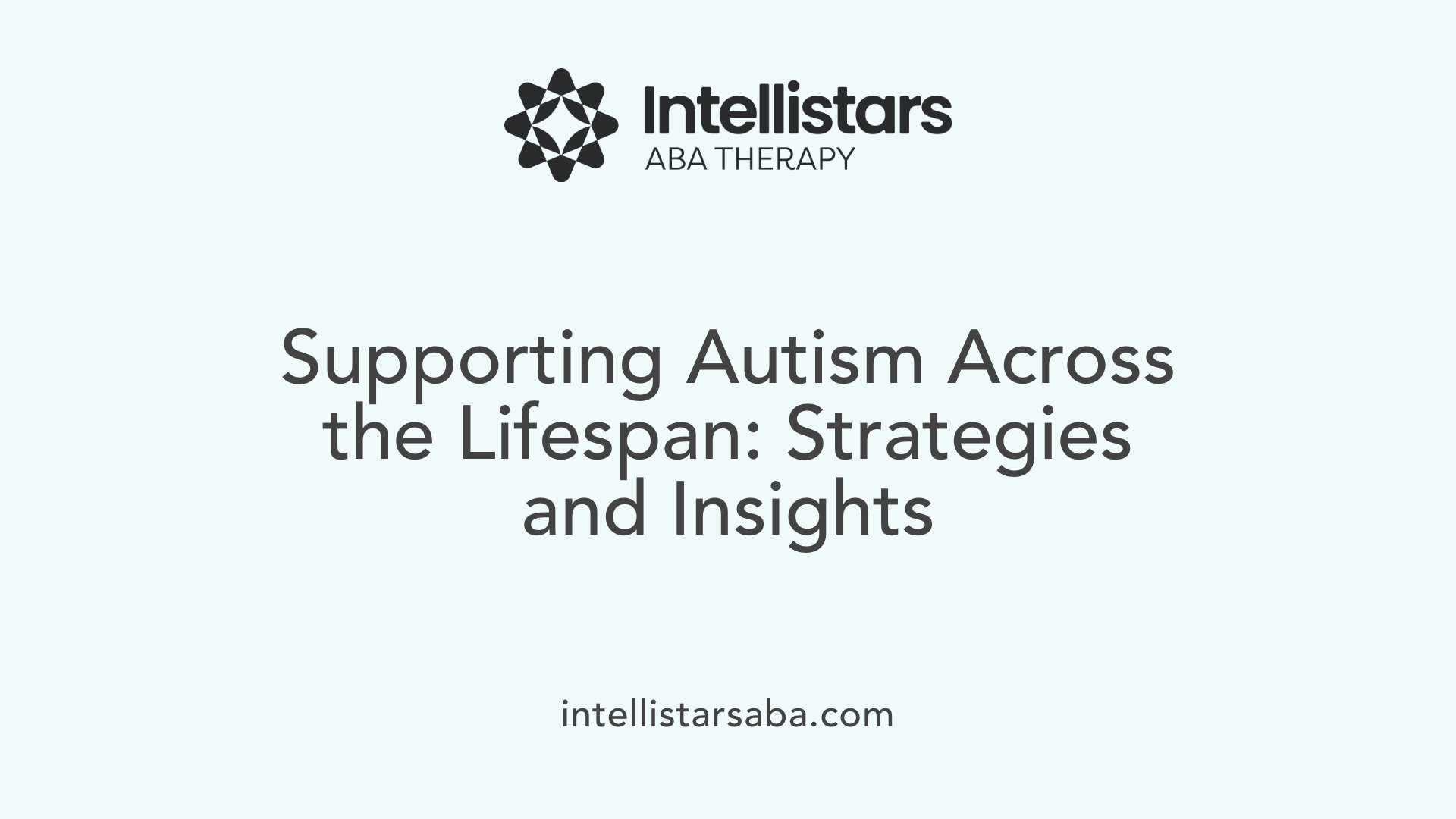Introduction to Autism Diagnosis Timing
Autism Spectrum Disorder (ASD) is a neurodevelopmental condition characterized by challenges in social communication, repetitive behaviors, and sensory sensitivities. Recognizing the age at which autism is typically diagnosed is crucial for early intervention, which can significantly improve developmental outcomes. This article explores the key stages, signs, assessment methods, and resources related to the diagnosis of autism, providing a comprehensive overview for parents, caregivers, and professionals.
Early Signs of Autism and Developmental Milestones

What are early behavioral indicators of autism in children?
Early behavioral signs of autism often appear within the first year of life. These include limited or no response to their name, which is usually a child's cue to seek interaction. Children may avoid eye contact and show little facial expression, such as smiling or showing interest in others. Speech development may be delayed, and some children might even lose skills they've previously acquired.
Repetitive behaviors like hand-flapping, rocking, or lining up toys are common early indicators. Children might also have difficulty understanding or expressing emotions and may prefer solitary play over interactive activities. Limited gestures such as pointing or waving, and challenges in imitation, can also be telling. Recognizing these signs—particularly between 9 and 24 months—can lead to earlier evaluations and beneficial interventions.
What developmental milestones are relevant in autism detection?
Developmental milestones like walking, talking, and social engagement are fundamental in assessing a child's growth. Most children begin babbling, responding to their name, and initiating simple social exchanges by around 12 months. Delays in reaching these milestones—such as not speaking by 18 months or not following simple instructions—may raise concerns about autism.
Other signs include lack of joint attention, meaning the child does not look where an adult points or share interest in objects or events. Despite some children developing typically early on, subtle signs can be detected as early as 6 months. Continuous developmental monitoring is essential because early detection allows for prompt support, which can significantly improve outcomes.
Variability in symptom onset and recognition
Autism symptoms can emerge at different times for each child. In some, signs are observable within the first year, while in others, they may not be apparent until 24 months or later. Sometimes, children develop normally initially but then lose skills or show regression between 18 and 24 months.
Most professionals agree that signs are usually seen by 2 to 3 years old, but the earliest reliable diagnosis by an experienced professional can be made at around 18 months. Because of this variability, routine developmental screening at regular check-ups at 9, 18, and 30 months is vital. Recognition of early signs increases the likelihood of early intervention, which can greatly assist in developmental progress.
Diagnostic Timing and the Role of Screening

At what ages are autism spectrum disorder (ASD) typically diagnosed?
Autism Spectrum Disorder (ASD) can often be identified as early as 12 to 18 months through behavioral signs like limited eye contact, not responding to their name, and delays in speech development. The American Academy of Pediatrics recommends screening during routine checkups at ages 18 and 24 months to catch early signs. While some children show clear signs before age 2, most diagnoses are confirmed in early childhood, usually around age 3. The age at diagnosis can vary depending on the severity of symptoms, access to healthcare, and the effectiveness of developmental monitoring.
Recommended ages for screening and diagnosis
Routine developmental screenings are advised at 9, 18, and 30 months during well-child visits. The critical screening ages recommended by the CDC and pediatric guidelines are at 18 and 24 months, aligning with the window when most signs become noticeable. Diagnostic assessments involve behavioral observations, parent interviews, and standardized tools like the Autism Diagnostic Observation Schedule (ADOS). Diagnosis often occurs between 2 and 3 years old, although signs can appear much earlier, even in infancy.
Impact of early detection on intervention outcomes
Detecting autism early greatly improves intervention success. When diagnosed by age 2, children can begin behavioral therapies and support services during sensitive developmental periods. Such early intervention can lead to improvements in language, social skills, and adaptive behaviors, harnessing brain plasticity to support learning and communication. Early diagnosis also reduces parent stress by providing clarity and access to resources, setting a foundation for better long-term outcomes.
Variability in diagnosis age due to symptom presentation
The age at which autism is diagnosed varies widely. Some children show overt signs in the first year, like disinterest in social interactions, while others may not exhibit noticeable symptoms until age 3 or later. Children with subtler or less typical symptoms often receive diagnoses later, sometimes after age 4, especially in settings with limited healthcare access. Moreover, girls are diagnosed later than boys on average, partly because they may present different symptom profiles. This variability underscores the importance of ongoing developmental surveillance and screening to identify children who may need further evaluation.
Assessment Methods and Diagnostic Procedures

How is autism diagnosed in young children?
Diagnosing autism in young children involves a detailed and careful process performed by specialized healthcare professionals such as developmental pediatricians, psychologists, or neurologists. The process begins with collecting comprehensive developmental histories from parents or caregivers, which provides insight into the child's early milestones, behaviors, and social interactions.
Next, clinicians observe the child's behavior directly, focusing on social communication skills, repetitive behaviors, and response patterns. They compare these observations with the criteria outlined in the DSM-5, which specifies areas like social-emotional reciprocity, nonverbal communication, and the presence of restricted or repetitive behaviors.
To standardize evaluations, professionals often use specific diagnostic tools such as the Autism Diagnostic Observation Schedule (ADOS-2) and the Autism Diagnostic Interview-Revised (ADI-R). These instruments assess social engagement, communication, play, and behaviors typical of autism. The combination of developmental history, behavioral observations, and these assessment tools helps ensure an accurate diagnosis.
This thorough approach is essential for early detection, which can significantly improve intervention outcomes. Early diagnosis allows tailored therapies that support social, communication, and behavioral development from a young age.
What assessment tools are used by healthcare providers to diagnose autism?
Various standardized assessment tools are integral in the diagnosis of autism. The Modified Checklist for Autism in Toddlers (M-CHAT), especially its revised version (M-CHAT-R), is widely used for initial screening of children between 16 and 30 months. It involves a questionnaire completed by parents that screens for behaviors associated with autism.
If initial screening suggests a need for further evaluation, clinicians may proceed with comprehensive assessments such as:
| Tool | Purpose | Age Range |
|---|---|---|
| ADOS-2 | Observational assessment of communication and behavior | 12 months and older |
| ADI-R | In-depth interview with parents about developmental history | All ages, specifically young children |
| SCQ (Social Communication Questionnaire) | Screening social communication skills | 4 years and older |
| Vineland Adaptive Behavior Scales | Measures adaptive behaviors for daily living | All ages |
These tools evaluate a child's social skills, language development, and repetitive behaviors. When used with clinical judgment, they form the basis for an accurate diagnosis. Such assessments are crucial, as they guide early intervention strategies, which are most effective when started early.
In conclusion, diagnosing autism involves a multidisciplinary approach leveraging behavioral observations, detailed developmental histories, and validated diagnostic instruments. These methods are essential to identify children who need support and to develop personalized intervention plans.
Factors Influencing Age at Diagnosis and Resources for Support

What factors may influence the age at which autism is diagnosed?
The timing of autism diagnosis can vary widely based on several influences. Children with more evident symptoms, such as significant delays in speech or severe social difficulties, tend to be diagnosed earlier, often by age 2 or 3. When autism co-occurs with other developmental or intellectual disabilities, or when symptoms are severe, professionals may recognize signs sooner.
However, access and availability of healthcare services are crucial. Children living in rural areas or underserved communities may experience delays due to limited specialist availability or healthcare disparities. Socioeconomic status also impacts diagnosis timing; families with higher income or insurance coverage often access evaluations and interventions more promptly.
Cultural attitudes and awareness about autism can influence whether signs are recognized promptly. In some cultures, developmental delays are more readily identified, while in others, symptoms may be overlooked or attributed to other causes.
Caregiver awareness and their ability to advocate for evaluations significantly affect diagnosis age. Healthcare providers’ familiarity with early signs and screening guidelines, such as those recommended by the American Academy of Pediatrics, also plays a vital role.
What resources are available for parents and caregivers to understand autism diagnosis and early signs?
Parents and caregivers have access to a wealth of resources designed to facilitate understanding of autism and its early signs. Major organizations like the CDC and Autism Society provide comprehensive guidance, including developmental milestone checklists, screening tools, and educational materials.
Local early intervention programs and specialized clinics are vital resources, offering evaluations, diagnostic services, and tailored therapies. These programs often include multidisciplinary teams who assess a child's social, communicative, and behavioral development.
Support networks and parent groups provide emotional support and practical advice, aiding families in navigating care options and connecting with others facing similar experiences. Many of these groups share valuable information online, through social media, and in community events.
Additionally, online directories help locate qualified professionals such as developmental pediatricians, psychologists, speech therapists, and neurologists. Such resources empower parents with knowledge and facilitate earlier detection, leading to timely intervention.
In summary, awareness, education, and accessible services are fundamental to ensuring children receive diagnoses and support as early as possible, improving long-term outcomes.
| Factors Affecting Diagnosis Age | Description | Additional Considerations |
|---|---|---|
| Symptom Severity | More pronounced symptoms lead to earlier detection | Especially in children with comorbidities |
| Healthcare Access | Availability of specialists and services | Rural vs. urban disparities |
| Socioeconomic Status | Financial resources influence evaluation timing | Insurance coverage and affordability |
| Cultural Attitudes | Community beliefs and awareness | Impact on recognition and advocacy |
| Caregiver Awareness | Knowledge and advocacy skills | Affects promptness of seeking evaluation |
| Professional Training | Clinician familiarity with early signs | Use of screening tools like M-CHAT-R |
This comprehensive understanding underscores the importance of addressing systemic and social factors alongside educational support in the early diagnosis of autism.
The Lifelong Journey of Autism Diagnosis and Support

What does a Level 1 autism diagnosis indicate?
A Level 1 autism diagnosis, often termed as requiring some support, highlights that the individual can manage most daily activities and communicate effectively. However, they may find initiating social interactions and understanding social cues more challenging. These individuals might experience difficulties in adapting to new situations or behaviors, which can impact social and occupational aspects of life. Support strategies typically include social skills training and behavioral therapy, enabling individuals to increase independence and improve social engagement. Early intervention and consistent support can result in significant progress, helping individuals lead more fulfilling lives.
How does the diagnostic process evolve across different ages?
Diagnosis of autism varies across age groups, evolving from straightforward behavioral observations in toddlers to more complex assessments in adolescents and adults. In early childhood, pediatricians and specialists primarily rely on behavioral questionnaires, developmental history, and observation during developmental screenings, such as at 18 or 24 months.
In older children and teenagers, assessments incorporate detailed interviews about social, communication, and functional skills, often supplemented by psychological testing and educational evaluations. For adults, diagnosis might involve retrospective accounts of early childhood behaviors, current functioning assessments, and interviews to understand adult daily life challenges.
Despite differences in approach, early detection remains essential. Diagnosing early provides opportunities for timely intervention, which can dramatically influence developmental outcomes. Lifelong support includes not only behavioral therapies but also employment aid, social services, and mental health care tailored to individual needs.
Support strategies across the lifespan
Support does not end after early childhood. As individuals grow, their needs change. Children benefit from speech and occupational therapy, social skills training, and early behavioral interventions.
In adolescence and adulthood, support expands to include vocational training, social integration programs, and mental health services. Adults with autism might participate in community programs, employment workshops, or therapy to manage sensory sensitivities, social challenges, or co-occurring conditions.
Consistent support across the lifespan can help individuals with autism achieve greater independence, improve quality of life, and foster social inclusion. Awareness and understanding continue to grow, making it possible to tailor support strategies that respect each person's unique journey.
| Age Group | Typical Evaluation Methods | Support Focus | Key Outcomes |
|---|---|---|---|
| Toddlers & Children | Behavioral screening, developmental history, observation | Speech, social skills, early intervention | Improved communication, social engagement |
| Teenagers | Psychological assessments, educational evaluations | Vocational training, social skills | Increased independence, social participation |
| Adults | Functional assessments, retrospective history | Employment support, mental health | Better integration, reduced anxiety and sensory issues |
Understanding that autism is a lifelong condition emphasizes the importance of adaptive support strategies. Early diagnosis and continued support can help individuals reach their full potential and enjoy active, meaningful lives.
Summary and Final Thoughts on Autism Diagnosis Timing
Understanding when autism is diagnosed involves recognizing the early signs, adhering to screening recommendations, and utilizing comprehensive assessment tools conducted by qualified professionals. The emphasis on early detection is backed by evidence that swift intervention can profoundly influence developmental trajectories. While diagnosis typically occurs between age 2 and early childhood, children can sometimes be identified earlier, even by 12 months, especially with vigilant observation and screening. Ensuring access to resources, education, and support can make a significant difference throughout an individual's lifetime, fostering better outcomes and enhanced quality of life for those on the autism spectrum.
References
- Signs of autism - Autism Speaks
- When do children usually show symptoms of autism? | NICHD
- Screening for Autism Spectrum Disorder - CDC
- Autism spectrum disorder - Symptoms and causes - Mayo Clinic
- Do you think your child may have autism? Learn when to seek an ...
- "Could My Child Have Autism?" Ten Signs of Possible Autism ...
- How early can you — and should you — diagnose autism?
- Autism Spectrum Disorder (ASD) Symptoms & Causes






